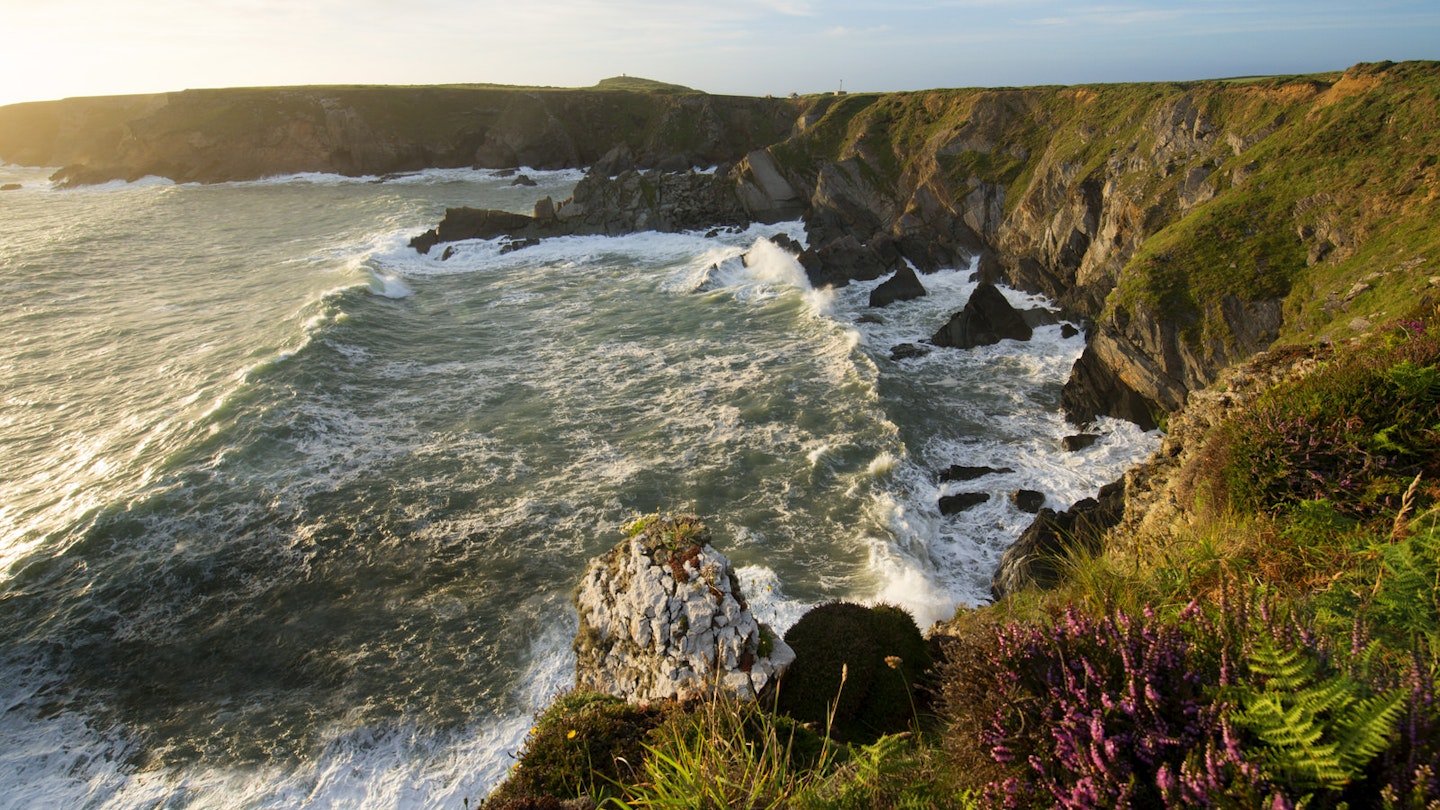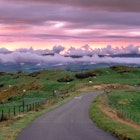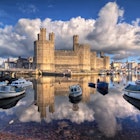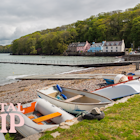Nowhere in the UK can rival Pembrokeshire, in Wales’ wild southwest, for coastal adventures. Here, you can eye puffins on Skomer, feel your stomach somersault as you jump from giddy heights while coasteering and kayak in silent exhilaration below cliffs that have been around since dinosaurs roamed the Earth.

A leap into the Atlantic: coasteering
It’s only a 10m jump, but from this daunting, needle-thin spike of rock it might as well be 100m.
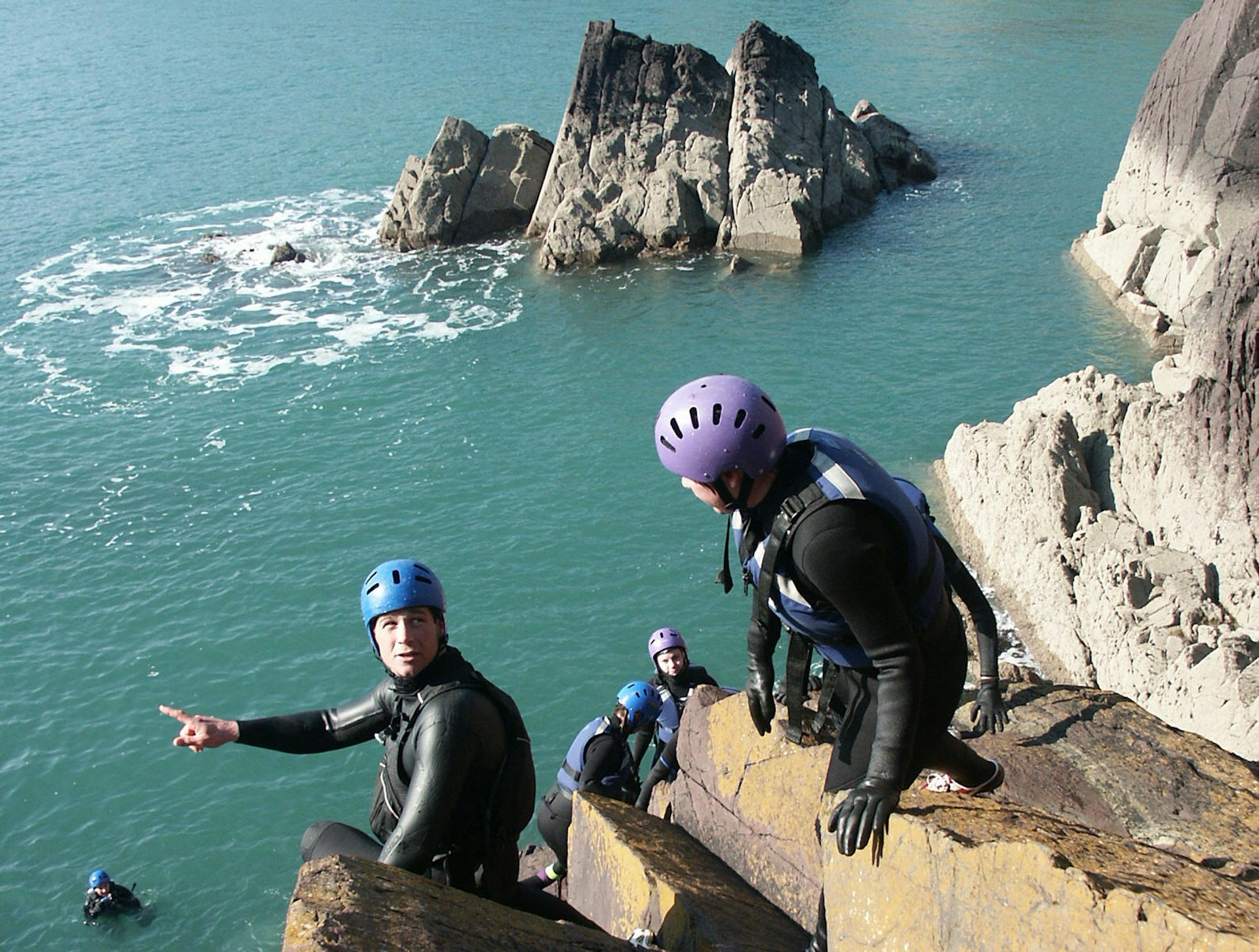
‘Keep your arms flat to your body, your legs straight and look towards the horizon,’ advises coasteering guide Megan. ‘And don’t forget to smile for the camera…’
In a flash it’s over: gasped breath, a bold leap off the edge, a gulped wave, then shocking cold of the Atlantic.
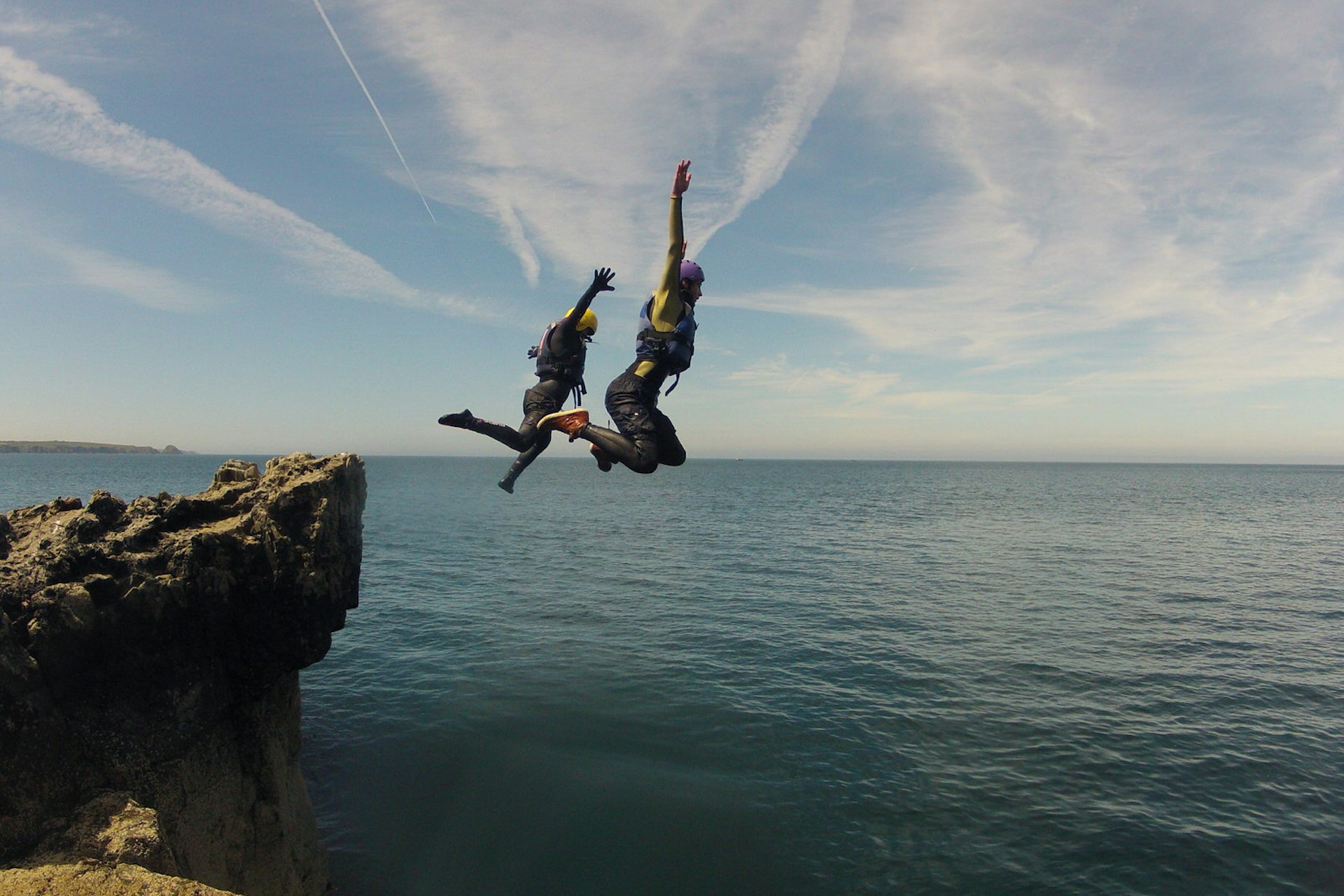
But jumps are only part of coasteering, which was born in Pembrokeshire some 30 years ago. ‘Coasteering is a means of exploring rugged stretches of coast you otherwise don’t get to see,’ says Sophie Hurst, of Preseli Venture. ‘It’s all the things your parents told you not to do when you went to the beach as a child: boulder scrambling, climbing through openings in the rocks and jumping off cliffs. It’s safe as we plotted and tested the routes ourselves, and you’re kitted out with a wetsuit, helmet and buoyancy aid.’
Close encounters with Welsh wildlife

Far more than just a buzz, coasteering is an in-depth, up-close encounter with the force of the sea and the ecosystem of the shore. As you search for footholds on rock and drift through caves, your focus is continually drawn to oft-overlooked wildlife and plants: the hovering chorus of a skylark, obstinate limpets clinging to crags slick with seaweed, shimmering rock pools and tiny barnacles, marine oddities with penises eight times the length of their bodies. Preseli Venture uses different sites depending on conditions, one of which is a wonderfully isolated spot, tucked away near the ruined Chapel of St Nons, where St David was purportedly born. Coasteering is offered by a host of companies in and around St Davids including Preseli Venture, Tyf Adventure and Celtic Quest.
Hidden caverns and choppy waters

Kayaking on a group trip is another way to immerse yourself in this stunning corner of Wales, with the quaint harbour of Fishguard a fine option for a morning’s paddle. After a brief rundown of the rules – how to turn and, most importantly, not capsize, kayakers soon slip into the rhythm, paddles slicing through turquoise-blue water to pass rocky pinnacles, arches and hidden caverns as the coast slowly unravels. More daring members of the group tackle the choppy waters of narrow sea channels, thrusting themselves into the rapids. They are not the only ones who relish these lonely reaches of northern Pembrokeshire – rare seabirds, porpoises and dolphins can be spotted.
The Pembrokeshire Coast Path
Summer in Pembrokeshire and the air is charged with the sweet scent of herbs and spread gold with wildflowers. Daisy-like sea mayweed, fragile sea spurry, sea campion bells, pink thrifts and buttercups bend in the breeze atop sheer cliffs and turn meadows into vibrant tapestries of colour. Butterflies flit between the hedgerows that twist along the contours of the coast. The only sounds are the trill of seabirds, the crash of breaking waves and the fall of foot on rock.
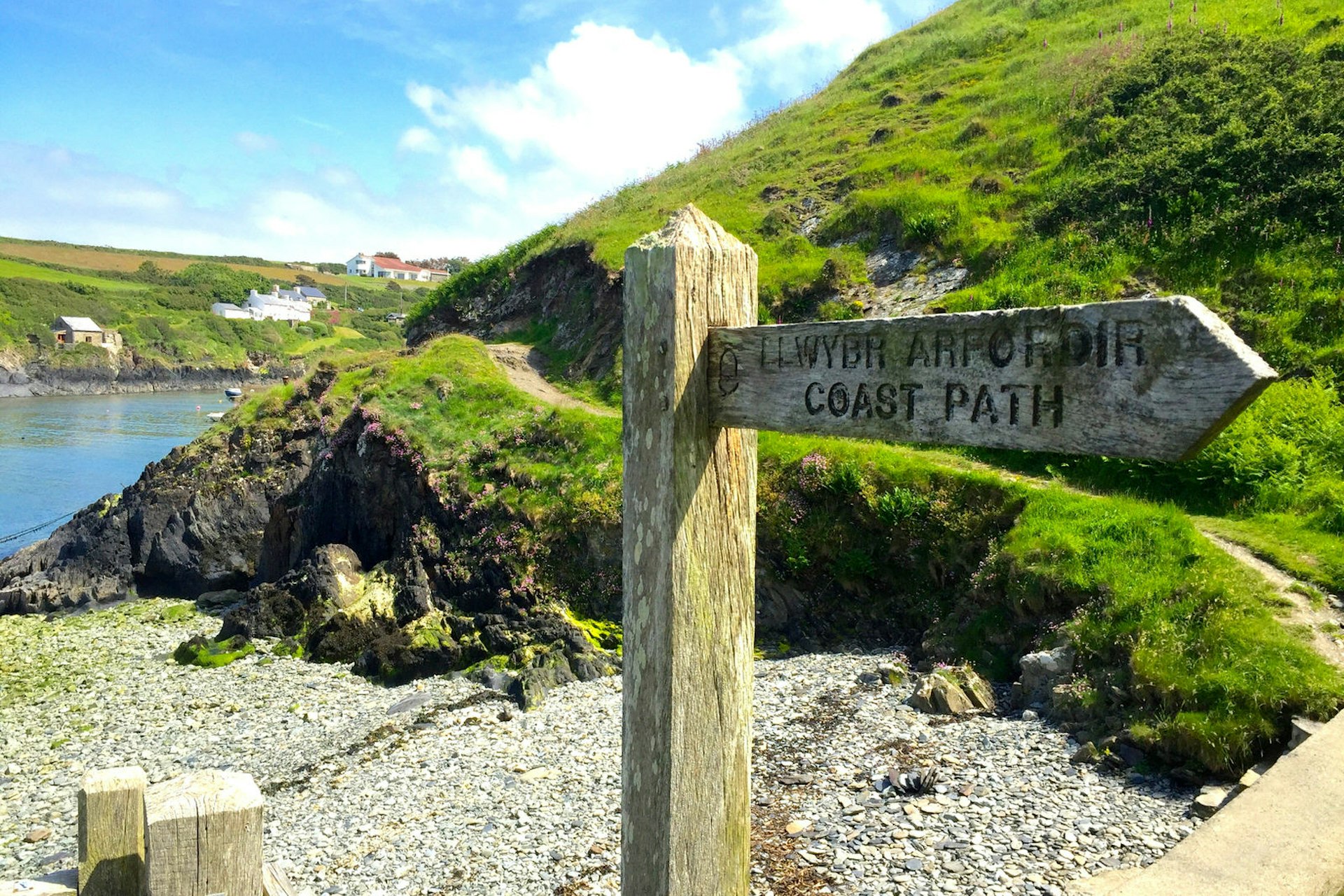
One glimpse at a map of Pembrokeshire has hikers itching to get out and stride along the trails that teeter up and over cliff tops and through the grassland and heathland fringing its starkly eroded coastline. The big one is the Pembrokeshire Coast Path (pembrokeshirecoast.org.uk), which wiggles for 186 undulating miles from St Dogmaels in the north to Amroth in the south.
Though it’s not overly strenuous, walking the path in its entirety is a substantial undertaking of 10 to 15 days. The trail reveals the coast’s most off-the-radar nooks and crannies, with secluded coves, seal-basked rocks, surf-lashed beaches and the enigmatic remains of stone circles. Dinky towns and fishing villages offer respite en route.
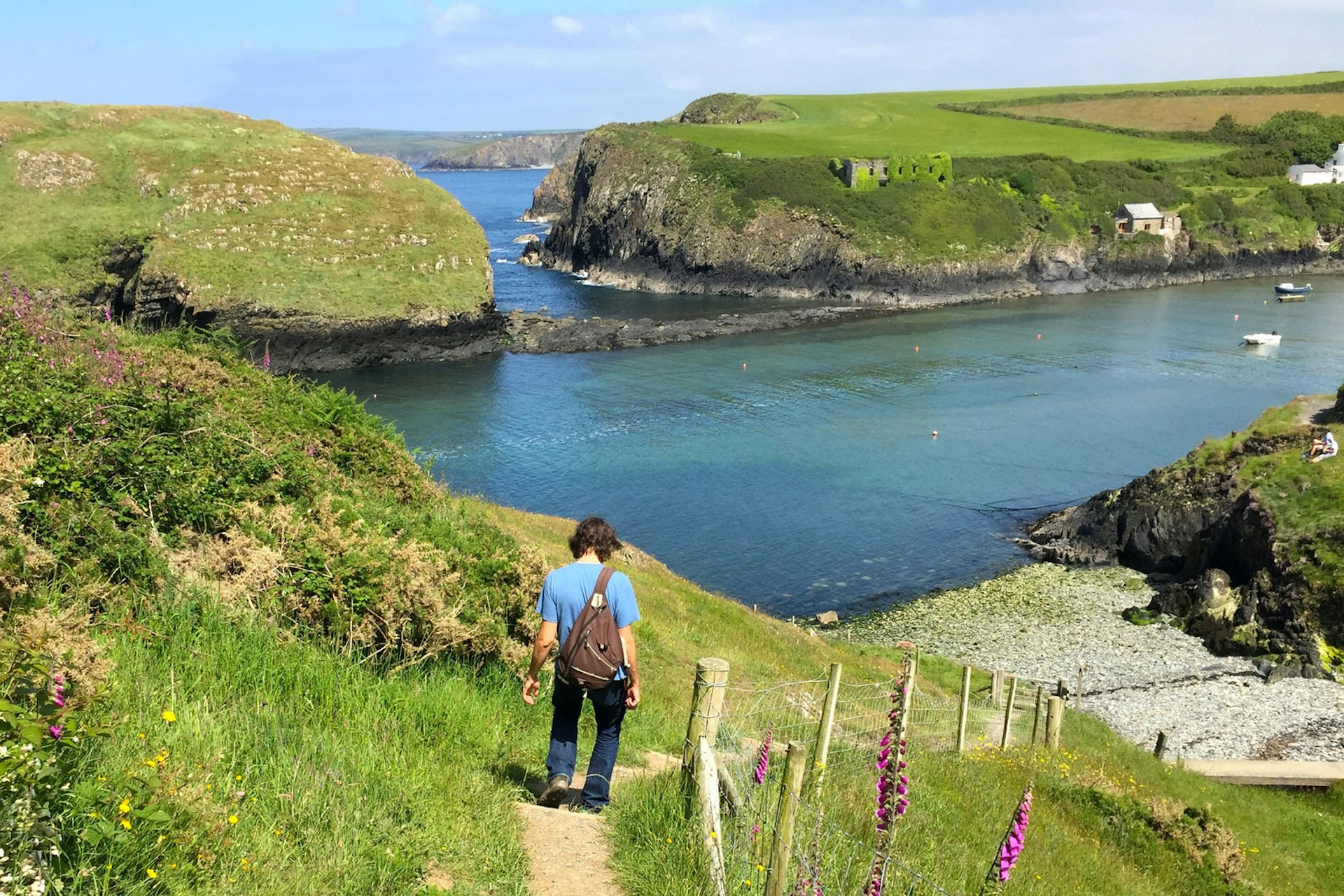
Most hikers tackle the path in stages. An easy jaunt giving you a taste of what’s out there, the two-hour, 1.9-mile circular walk around St David’s Head (nationaltrust.org.uk) begins at the broad swoop of Whitesands. It commands terrific views of Ramsey Island and takes in horseshoe-shaped coves like Porth Lleuog and Porthmelgan. There's history too, with the mount of St Patrick’s Chapel marking the spot where the saint embarked on his mission to bring Christianity to Ireland, as well as traces of Neolithic burial chambers and Iron Age forts. Other enticing half-day rambles include a two-and-a-half-hour walk linking Abercastle, with its iconic gap in the rock, to Abermawr’s peaceful, woodland-backed beach some 6 miles north, and the wild, 2-mile trudge around lighthouse-dotted Strumble Head, where seals rock up regularly.
Spotting puffins and shearwaters on Skomer

When the rain falls relentlessly and the grey sky appears to dissolve into misty sea, Skomer has a forlorn, Tolkienesque beauty. You’ll queue for the first-come, first-served tickets with Dale Sailing in Martin's Haven – get there at 8am to secure your seat – but boy is it worth it. A short, bumpy boat ride brings you to the island, which rears above the sea like the fabled lost land of Atlantis, with ragged, lush green cliffs of ancient volcanic rock. Bar the day-trippers and those overnighting at the Old Farm (welshwildlife.org), these precipitous cliffs are the sole preserve of thousands of seabirds, including terns, fulmars, kittiwakes, peregrines, rare choughs and red-billed oystercatchers.
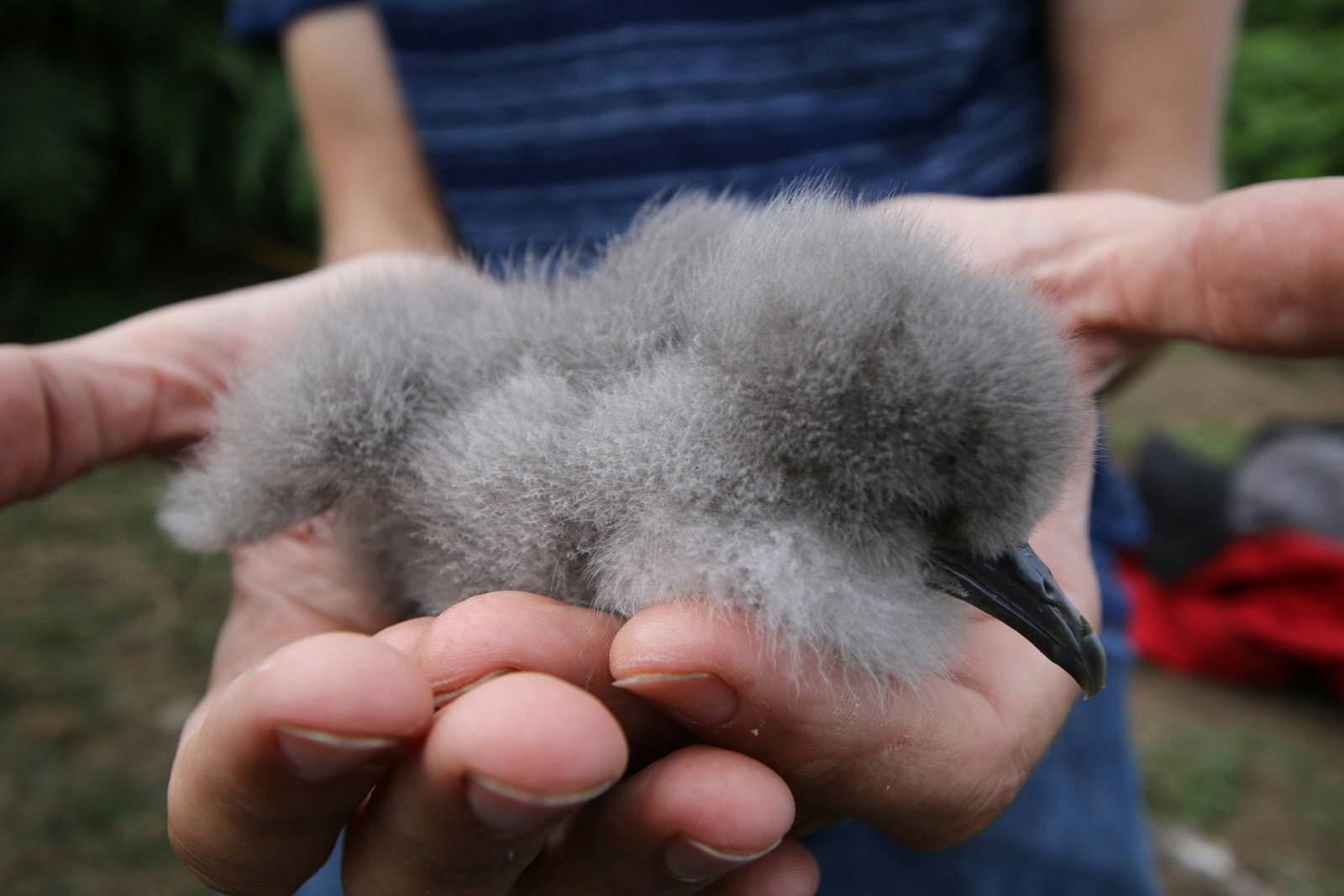
More famously, Skomer is the nesting ground and summer home of some 300,000 pairs of Manx shearwaters – the world’s largest colony. Flying all the way from South America in spring, they lay their eggs in burrows, spend the day out at sea away from predatory gulls, and return under the cloak of darkness.

But it’s the puffins that steal the show. Come in peak season (June and July) and you can expect a welcome committee. Few places offer such close encounters with these comically beaked birds, with a wing beat so ludicrously fast (400 per minute), it’s as though God inserted the wrong batteries. Head on the circular 4-mile trail of the island via the Wick and you’ll get close-ups of puffins preparing their nests, bringing sandeels in for their newly hatched pufflings, darting across the path and poking their heads inquisitively out of their burrows.

It really is quite something to be in such close quarters with these loveably clumsy birds – and Skomer is home to a 10,000-strong colony. Continue clockwise on the trail and you’ll pass Pigstone Bay, where porpoises are often sighted, and The Neck, where grey seals hang out most of the year.
Whales, dolphins and Ramsay Island
The neighbouring islands are equally rammed with wildlife. Thousand Islands Expeditions is the only operator permitted by the RSPB to land day-trippers on Ramsay Island, which is ringed by dramatic sea cliffs and aflutter with seabirds. Autumn is the grey seal breeding season and this is prime time to spy them with their snow-white furball pups. Thousand Islands also runs whale- and dolphin-spotting trips around Grassholm. It's famous for its huge gannet colony and being the westernmost point in Wales.
Five more Pembrokeshire adventures
- Surfing There’s great surf up and down the coast. For lessons, check out Outer Reef (outerreefsurfschool.com) and New Surf (newsurf.co.uk).
- Diving Pembrokeshire’s clear waters offer excellent visibility, abundant marine life and wrecks to explore. West Wales Dive Company (westwalesdivecompany.co.uk) arranges shore and boat dives.
- Foraging Channel your inner hunter-gatherer on a coastal ramble with Wild About Pembrokeshire (wildaboutpembrokeshire.co.uk).
- Rock Climbing Pembrokeshire’s towering cliffs are laced with over 3000 routes. Tyf Adventure runs guided climbs.
- Cycling & Mountain Biking Hundreds of miles of terrific paths and tracks loop through the Pembrokeshire Coast National Park (pembrokeshirecoast.org.uk) and its surrounds.
Kerry Christiani travelled to Pembrokeshire with support from Visit Pembrokeshire, Preseli Venture and Dale Sailing. Lonely Planet contributors do not accept freebies in exchange for positive coverage.

